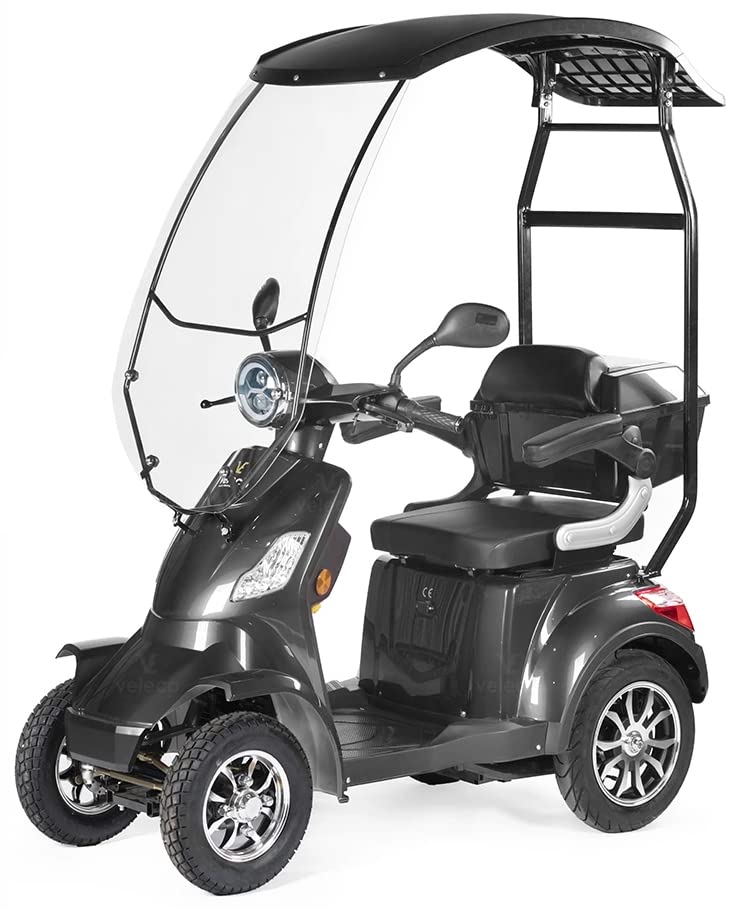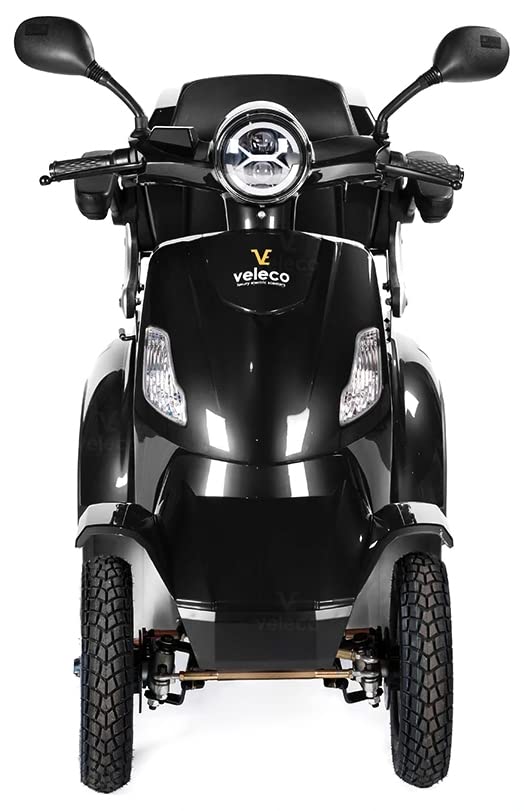
Medicare and Medicaid Coverage For Medical Mobility Scooters
A medical mobility scooter can be an excellent option for wheelchair users to move around. It has a bigger foot deck and its wheels have a smaller turn radius than electric chairs.
It also has plenty of storage space. In addition, some
portable mobility scooters models can be dismantled into smaller pieces and fit inside the trunk of a car.
In order to obtain a medical scooter, you must go through Medicare
You may be eligible to Medicare to pay for the cost of mobility scooters if struggle to get around without a walker or wheelchair. Medicare Part B will cover up to 80% the cost of
medical mobility scooters provided you meet certain criteria. Discuss with your doctor whether you qualify for coverage. Then, you can contact an approved Medicare provider who accepts assignments.
Medical scooters are durable medical device (DME) as defined by Medicare Part B. Medicare will only pay for medical scooters when you have a consultation in person with your doctor. A doctor will assess your situation and determine if you require mobility scooters to move around your home. If so, they'll create prescriptions that allow Medicare to pay for the cost of the device.

If you have an appropriate prescription, you can begin shopping for the perfect scooter. There are many aspects to consider when choosing the right model, including the weight capacity and the turning radius. It is also important to make sure the scooter is suitable for use outside your house and is able to take on various terrains.
You'll need to check the coverage of your particular plan before you purchase a scooter. Some have a deductible, therefore it's essential to study them prior to making a decision. It's important to think about the advantages of different brands and models. Some are more affordable than others, and you'll want to consider the
advanced safety features scooters that you'll need the most.
The Medicare scooter coverage amounts differ between plans, but they all have the same basic requirements. To receive the benefits you must be registered in Medicare Part B and a doctor will have to prescribe the plan. The doctor must also verify that you are unable to move around your home without it. In most cases, scooters are only covered when they are used indoors.
A Medicare-approved DME provider will assist you to choose a scooter that is suitable for your needs. They'll visit your home to evaluate your space and check whether the scooter is in a position to navigate your home's doors, hallways, and furniture. They will also test the motor to ensure that it can handle your weight and a variety of terrains.
Scooters that have Medicare approval come in a wide range of sizes and designs. Some are designed to make an eye-catching fashion statement, while others are made with superior performance in mind. The Maxima medical mobility scooter is a great example of a fashionable mobility device that gives performance and mobility. It can support up 500 pounds and has a top-speed of 5.3 miles per hours. It is available in two colors: Candy Apple Red and Viper Blue.
Medicaid and Medical Scooters
There are numerous funding options for those with limited mobility due to a medical condition. Medicare and Medicaid offer financial assistance for those who meet certain requirements. You should always consult with a healthcare professional to determine which medical scooter is best for your needs.
In general, Medicare Part B pays for durable medical equipment (DME) such as
mobility scooter for travel scooters, if you present the prescription of a doctor and a demonstration of the need for the device. It is recommended to contact your local Medicaid office and find out if they can help you. If you are, select a DME supplier that accepts Medicaid and is willing to collaborate with your physician to obtain the necessary documentation.
Once you've found an DME provider that accepts Medicaid, select the appropriate scooter for your medical requirements. Consider things like the turning radius, the weight of the assemble, and clearance to the ground. For example, a three-wheeled mobility scooter can maneuver more easily in tight spaces or corners than a model with four wheels. The weight of the assembled unit is another thing to consider, as lighter scooters are simpler to transport and put together.
Certain states have additional programs to help with the purchase or rental medical scooters. You can contact your local Department of Health or department of aging to learn more about these programs. Veterans Affairs also offers mobility aids in a variety of forms, including scooters, for disabled veterans who meet the requirements.
The process of obtaining an medical scooter under Medicaid could be lengthy however, it is crucial to remain patient. By working closely with your healthcare provider, analyzing details about coverage, and staying in regular communication with your DME supplier to ensure that the process of getting an medical scooter through Medicaid is as easy as it can be.
You could be able to obtain an electric scooter from your private insurance company or from other funding sources such as grants and community groups. The process is different for each state and organization. You can check with local disability groups or independent living centers to see what options you have in your area. These organizations can suggest local vendors who offer mobility scooters that are approved by Medicaid. Additionally, they may be able assist you in the process of applying for.
Insuring a medical scooter with private insurance
In addition to Medicare and private health insurance, private health insurance may also provide mobility scooters. In this situation, insurance companies will consider medical necessity and other criteria. This will include a face-to face examination and a prescription from a certified medical professional. Additionally the scooter must be considered necessary for daily activities and must be able meet specific weight capacities as well as other requirements. Some private insurance plans will cover the accessories.
Typically, medical scooters are covered under Medicare Part B in the event that they're deemed durable medical equipment (DME). This means that the device will be covered up to 80 percent by the insurance company after the deductible is fulfilled. The patient is responsible for the remaining 20 percent. This applies to all types of scooters, including four-wheel and three-wheel models. There are exceptions to this rule. For instance, certain models are too big to be considered mobile and need to be towed behind a vehicle instead.
First, you must have an order from your physician to purchase a medical scooter. Then, the patient will have to locate an DME company that accepts their insurance. The DME company will then send the medical documents and the order forms to the insurance company to be approved. After the insurance has accepted your order, you will receive the medical scooter.
It is crucial to remember that a medical scooter bought through private insurance should be used for everyday tasks. It should be able to assist the user get around, and complete routine tasks such as bathing, dressing and eating. The scooter can also be used to move in and out of the home. In some instances, medical scooters can be used for shopping.
Medicaid can help pay for medical scooters in some states. However, there are different rules in each state. For instance, in certain states, the Medicaid program is only available for scooters that are provided by a contracted Medicare supplier. This is known as the Competitive Bidding Program. In certain instances, Medicaid may only cover medical scooters that are standard and are available at a reasonable price.
A medical mobility scooter can be a great tool to help people with mobility issues. Scooters can help people regain their independence after an accident or illness. In many instances medical scooters can be an alternative to wheelchairs. It can provide greater stability and comfort, making it the ideal choice for people who want to stay mobile. A medical scooter is a fantastic alternative for those who have difficulty walking or standing for extended durations.